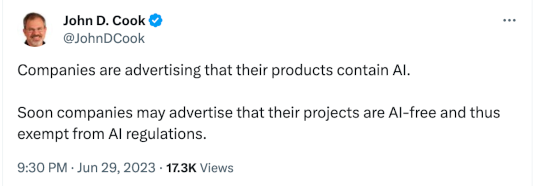If I give you a database, I give you every row in the database. So if you delete some rows from the database, you have less information, not more, right?
This seems very simple, and it mostly is, but there are a couple subtleties.
A common measure in data privacy is k-anonymity. The idea is that if at least k individuals in a data set share some set of data values, and k is large enough, then the privacy of those individuals is protected.
Now suppose you randomly select a single record from a database that was deemed deidentified because it satisfied k-anonymity with k = 10. Now your new dataset, consisting of only one record, is k-anonymous with k = 1: every record is unique because there’s only one record. But how is this person’s data any less private that it was before?
Note that I said above that you selected a record at random. If you selected the row using information that you know but which isn’t in the database, you might have implicitly added information. But if you select a subset of data, using only information explicit in that data, you haven’t added information.
Here’s where k-anonymity breaks down. The important measure is k-anonymity in the general population, not k-anonymity in a data set, unless you know that someone is in the data set.
If you find someone named John Cook in a data set, you probably haven’t found my information, even if there is only one person by that name in the data set. My name may or may not be common in that particular data set, but my name is common in general.
The number of times a combination of data fields gives a lower bound on how often the combination appears in general, so k-anonymity in a data set is a good sign for privacy, but the lack of k-anonymity is not necessarily a bad sign. The latter could just be an artifact of having a small data set.


